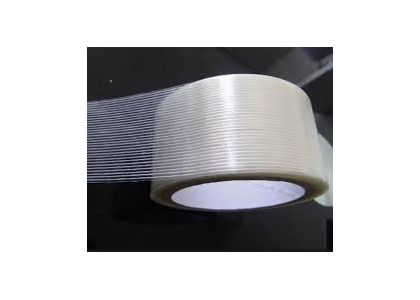
With U.S.-China trade tensions escalating and tariffs on Chinese imports—particularly on industrial goods like filament tape—reaching historic highs, U.S. businesses face an uphill battle in maintaining stable procurement. Buyers of filament tape, bulk fiberglass reinforced filament tape, and cross filament tape are struggling with rising costs, supply chain delays, and sourcing uncertainty. Additionally, alternatives to fiberglass reinforced filament tape or bi-directional fiberglass reinforced filament tape are limited in quality and availability. This article explores actionable strategies for U.S. buyers to sustain resilience and control costs during these disruptions, using insights from real buyers and shifting market trends.
The cost of importing filament tape from China has surged due to the 125% tariff increase. This dramatic change impacts everything from basic filament adhesive tape to high-grade glass filament tape used in industrial binding. These products are widely used in logistics, construction, automotive, and electronics, where alternatives are often either lower in quality or more expensive.
U.S. distributors have reported a 30% to 45% price spike on filament tape wholesale purchases, with some manufacturers pausing new orders until pricing stabilizes. For companies that relied heavily on just-in-time procurement, the cost adjustments are hitting quarterly margins hard.
Even when price is negotiable, delays remain a critical concern. Multiple U.S. buyers report extended lead times from filament tape manufacturers in China. Port congestion, customs inspections, and regional manufacturing slowdowns have caused weeks-long backlogs.
Unfortunately, shifting entirely to other countries is not an easy fix. Many of these new production centers rely on raw materials or adhesives still sourced from China, making the filament tape industry deeply entangled in China’s supply ecosystem.
Vietnam, India, and Mexico are often floated as alternative sourcing hubs. However, few of these regions have developed the infrastructure, material expertise, or production capacity needed for consistent quality across glass filament tape or bi-directional fiberglass reinforced filament tape.
Some U.S. buyers have opted for partial reshoring—working with domestic producers to create hybrid supply chains. Others are stockpiling filament tape during low-demand seasons to hedge against future price spikes or shipping disruptions.
Establishing long-term contracts with U.S.-based filament tape suppliers can provide more price transparency and predictable turnaround. Although U.S. suppliers typically come at a premium, they often offer improved quality control, compliance assurance, and direct communication.
Buyers have found success using value-added partnerships: for instance, co-developing custom fiberglass filament tape variants to replace discontinued Chinese models. Such collaboration often offsets cost concerns by optimizing product specifications.
One mid-sized electronics packager shared: “We split sourcing: 60% still from China because of price, but the remaining 40% is domestic. This helped us avoid backorders when Shanghai’s port slowed in Q1.”
Another distribution firm in New Jersey leveraged their long-standing relationship with a filament tape manufacturer to stock three months’ worth of bulk fiberglass reinforced filament tape in bonded warehouses. This gave them the buffer needed to avoid costly shipping delays during peak demand.
Modern buyers are also leaning into technology. Procurement software that integrates real-time trade data, supplier risk analysis, and tariff calculators enables more accurate cost forecasting. These tools allow companies to compare the long-term financial implications of sourcing from different regions or adjusting tape grades.
In addition, automated alerts on customs changes and port conditions can significantly reduce blind spots, especially for buyers handling multiple product SKUs in different tape categories.
Another emerging tactic is internal efficiency—using less tape or switching to smarter application tools. By investing in more precise application systems, companies can reduce material waste. Some have replaced wide-format cross filament tape with narrower variants when applicable, without sacrificing product integrity.
Similarly, dual-layered filament reinforced tape or tapes with optimized tensile strength have replaced heavier options in specific use cases. Customization of tape dimensions and adhesion levels is also proving effective.
Industry analysts expect continued volatility through the next 18 months. While the Biden administration may renegotiate tariffs in key sectors, most believe tape-related imports will remain under pressure for the foreseeable future. That said, buyers prepared to act now—whether by redesigning supply flows, integrating digital tools, or optimizing usage—stand the best chance of long-term success.
It’s no longer just about finding the cheapest supplier. It’s about building a sourcing model that can survive geopolitical stress, economic shifts, and logistical failures. Filament tape is a commodity—but managing it today requires strategic thinking and data-driven agility.